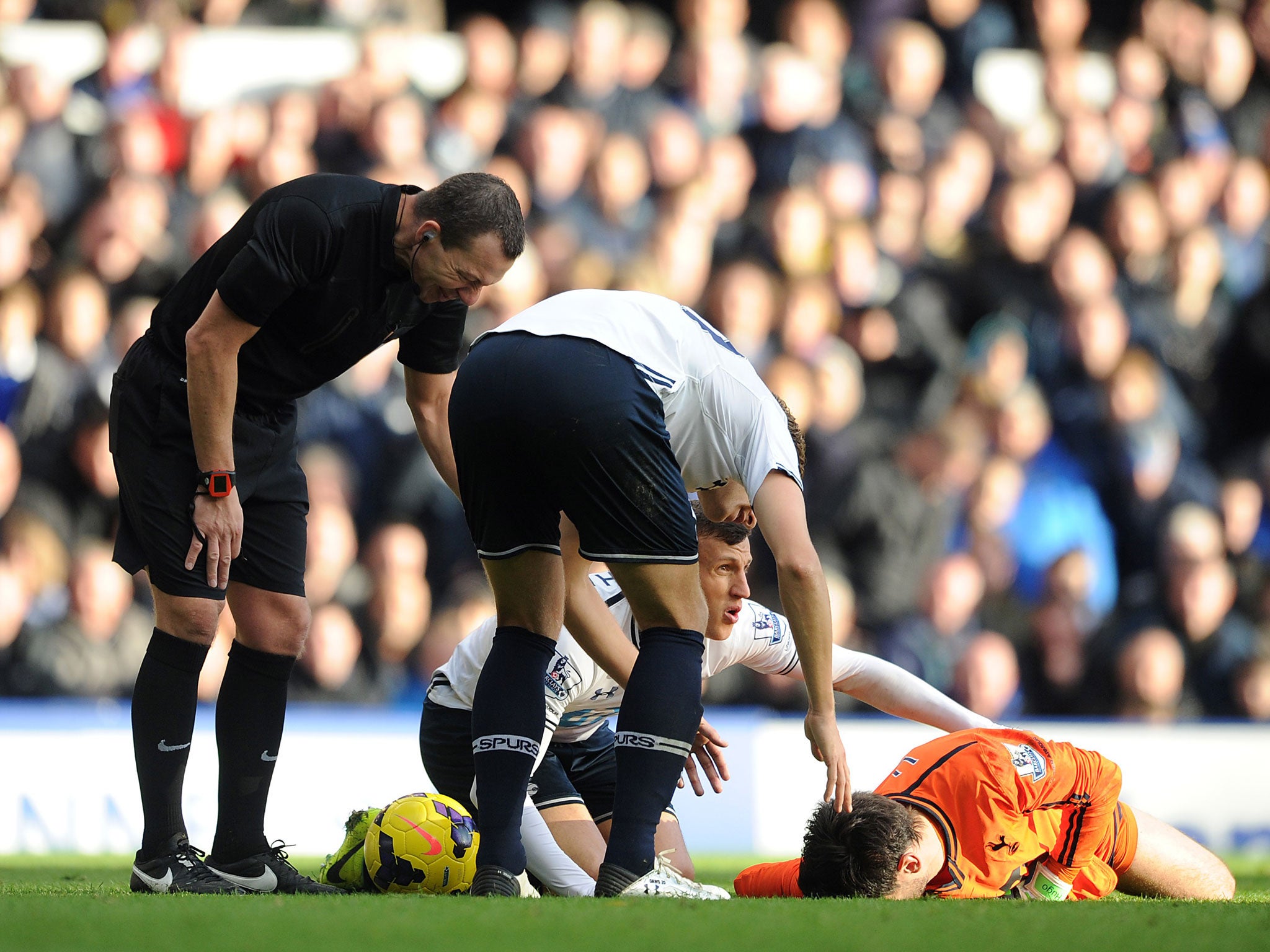Hugo Lloris concussion: Second-impact syndrome can kill
The risk of playing on after suffering concussion is just not worth taking

Incidents like this should not be allowed to happen. This is because there is a growing body of evidence to support the view that the damage caused by concussion does not just relate to the total number of concussions suffered, but also to the frequency at which they occur. The most extreme example of this is second-impact syndrome, which can be fatal; however, there is likely to be a sliding scale.
One of the things that animal research has shown is that your brain goes into a different mode when it suffers a concussion, a mode in which, among other things, it tries to repair itself. Metabolic changes following concussion can be apparent for anything up to several weeks. If you have another concussion, or even a sub-concussive hit while the brain is in that mode, then it can cause a disproportionate amount of damage.
There is also the danger that you will not be performing at 100 per cent in a concussed state. Injury begets injury. If you are not at your best, in a contact sport, the chances of making a mistake and getting injured again must be higher.
The risk in that situation is just not worth taking. Of course, these players are very, very motivated; they want to get back out there, but they are probably not considering the risks that they are taking by continuing to play. They might not always report when they have suffered a concussion because they want to play. The managers have to be aware of the risks, to take responsibility and to make sensible decisions.
We now know that sports players who suffer from multiple concussions are at risk of developing serious neurodegenerative problems later in life. For example, retired American Football players have an increased risk of dementia, Parkinson’s disease and chronic traumatic encephalopathy. They also have abnormal patterns of brain activity and report cognitive and emotional problems in everyday life.
Consequently, there is the question of what steps can realistically be taken to minimise the risks of long-term side effects without having a negative impact on the sport. One obvious way that risks may be minimised is by making sure that someone who has suffered a concussion comes off and then stays off until recovered, possibly for longer than the five days currently required.
Dr Adam Hampshire is a senior lecturer in restorative neuroscience at Imperial College, London
Subscribe to Independent Premium to bookmark this article
Want to bookmark your favourite articles and stories to read or reference later? Start your Independent Premium subscription today.

Join our commenting forum
Join thought-provoking conversations, follow other Independent readers and see their replies